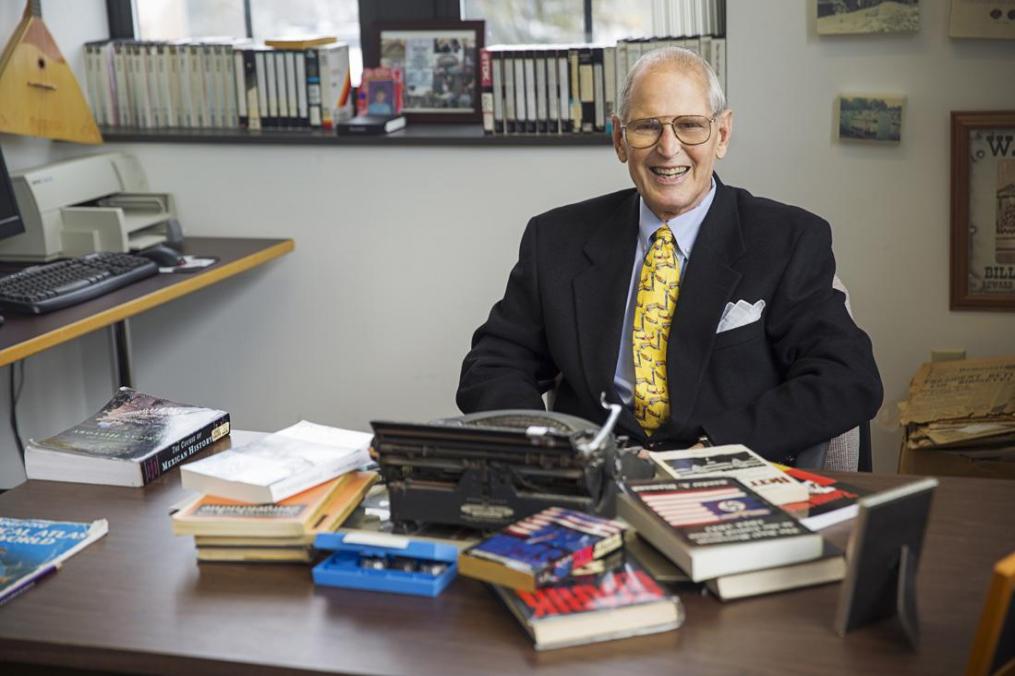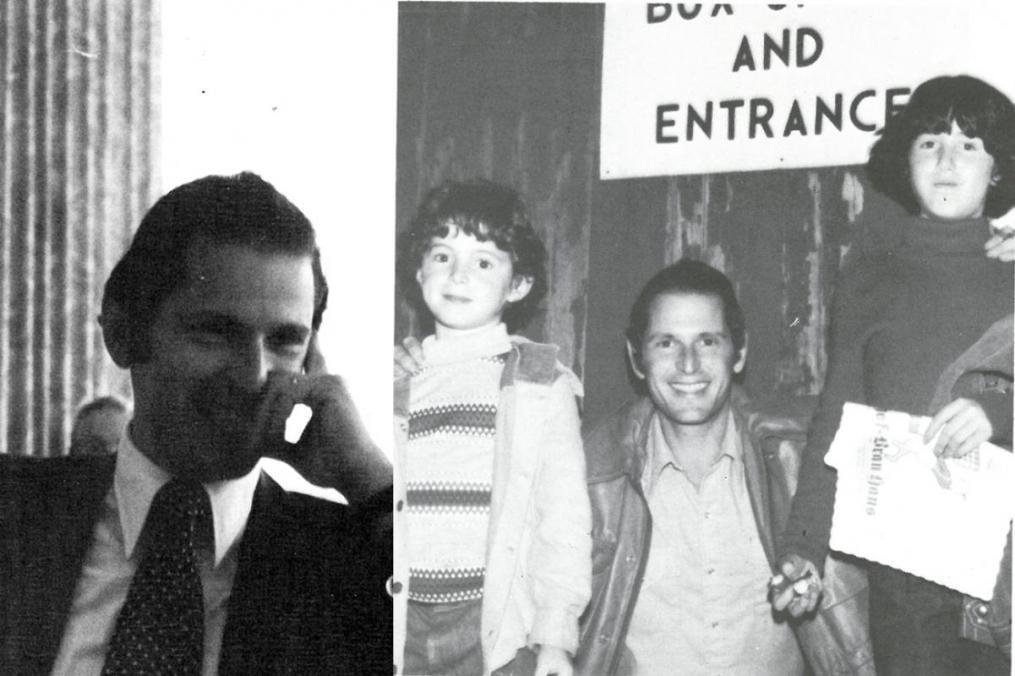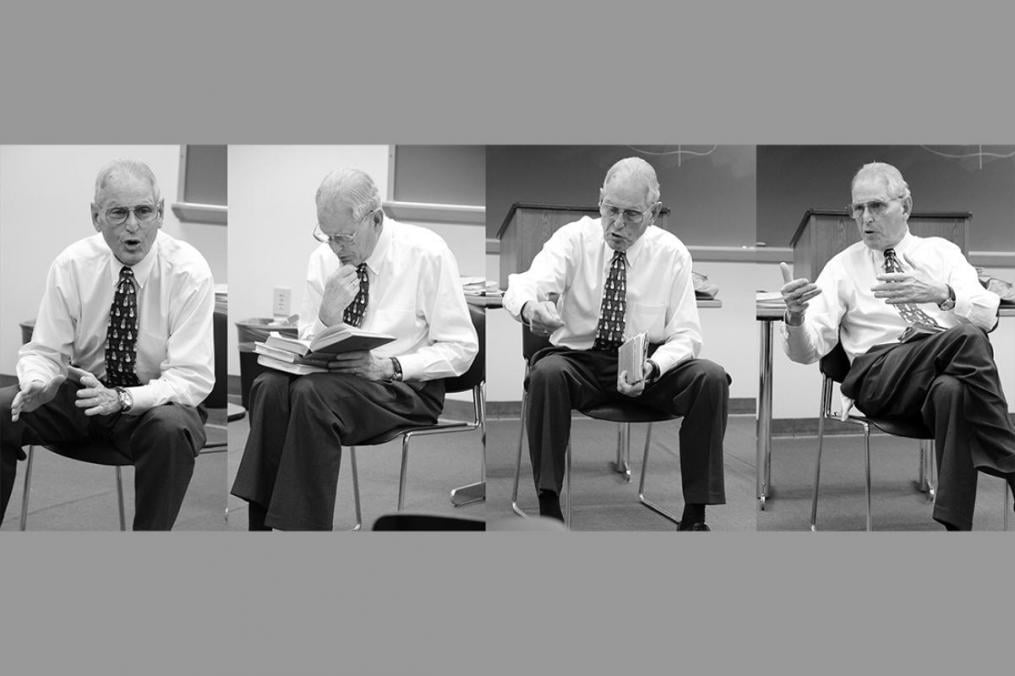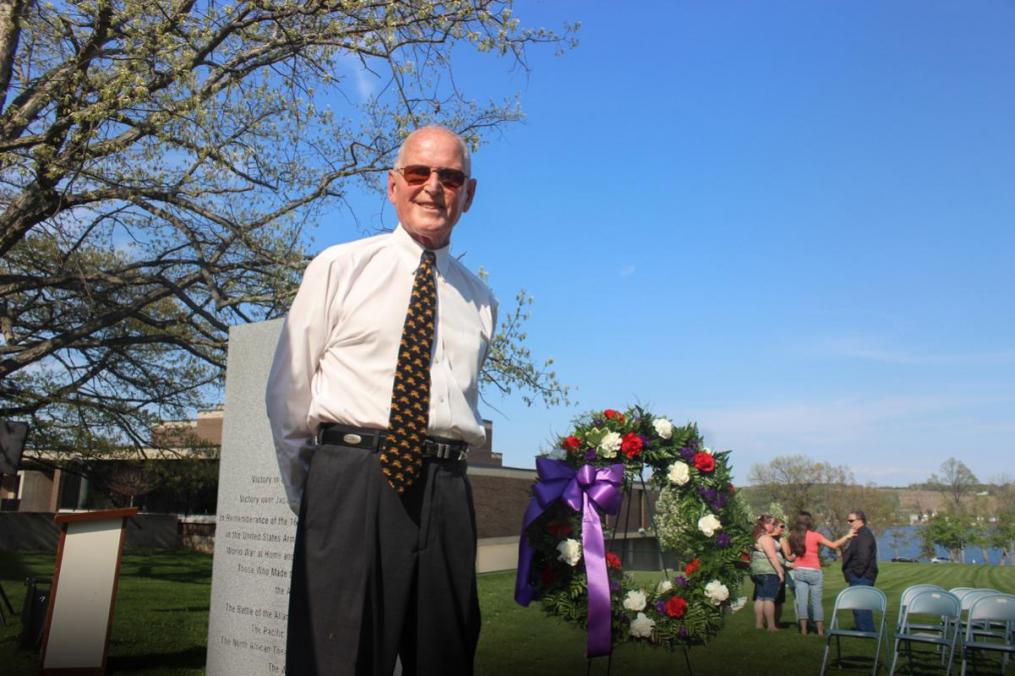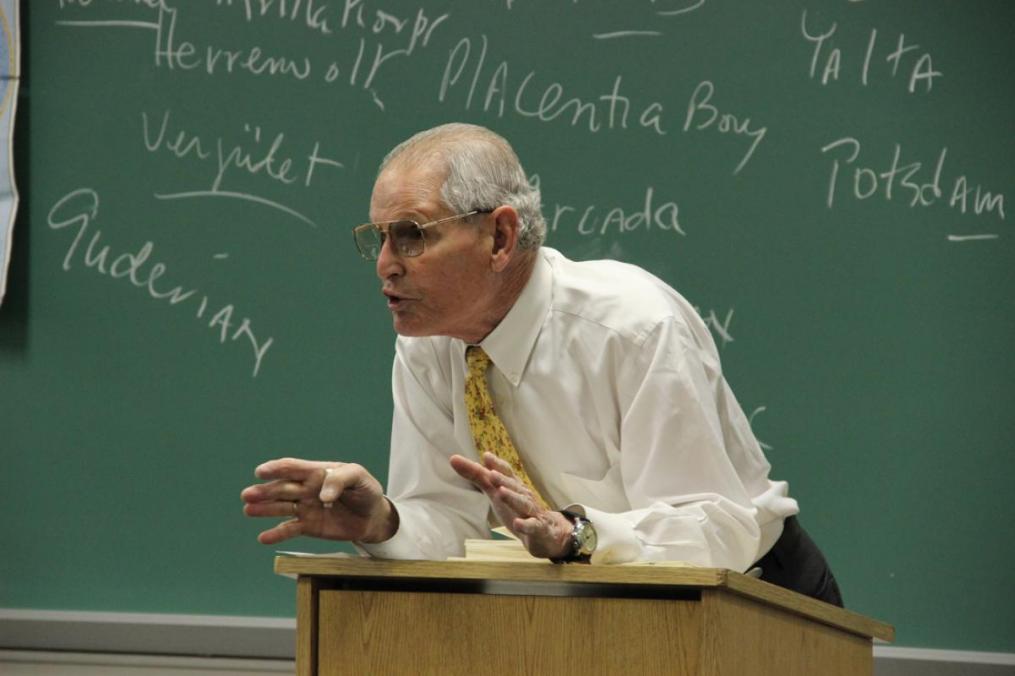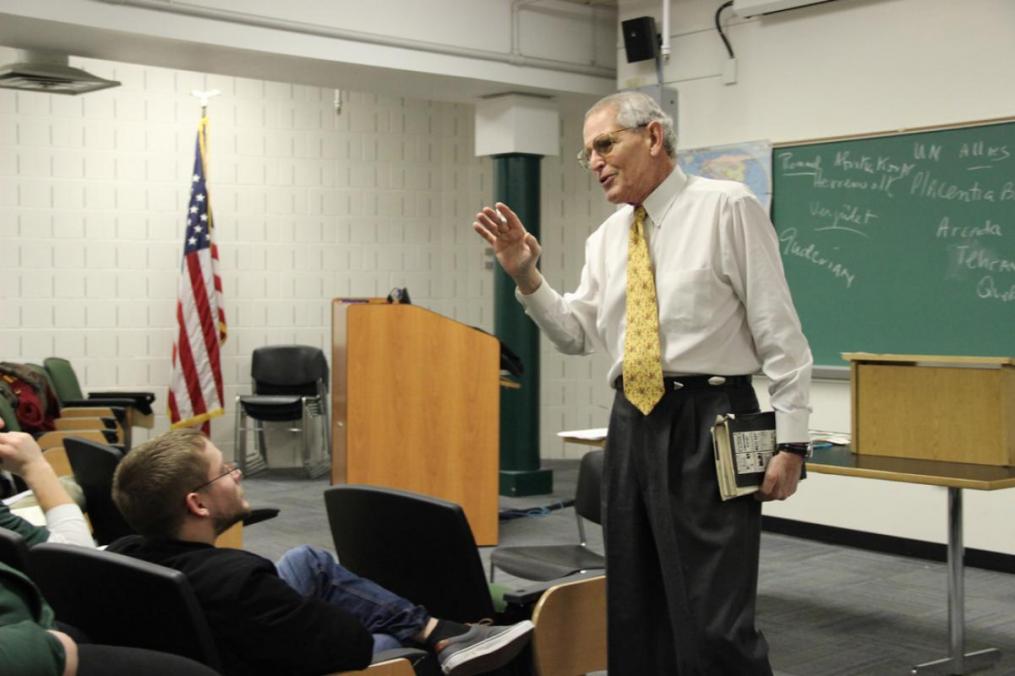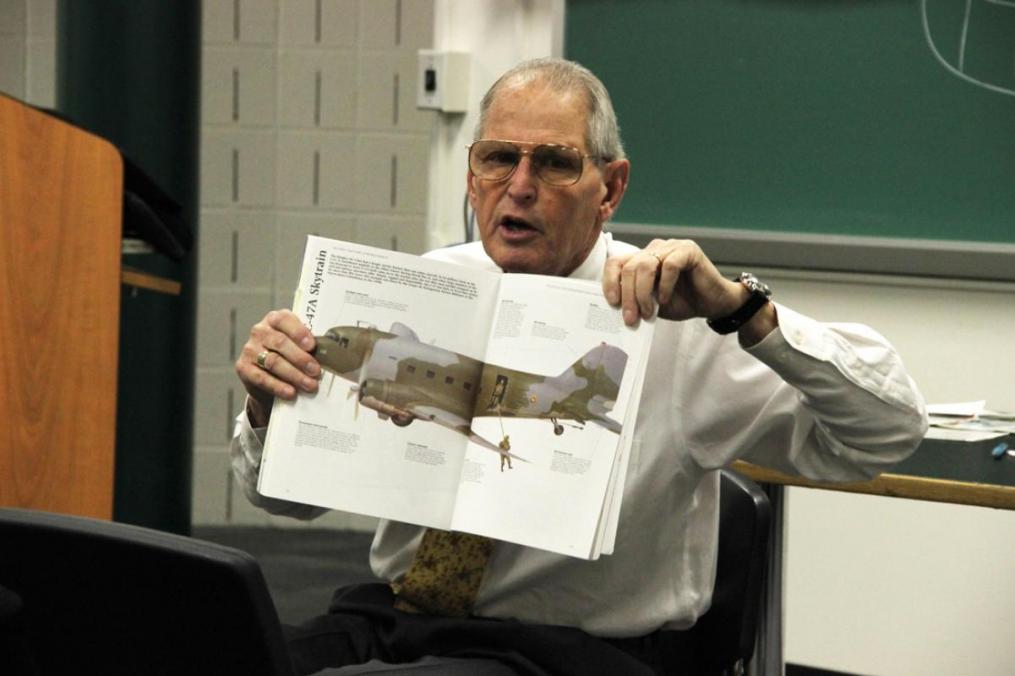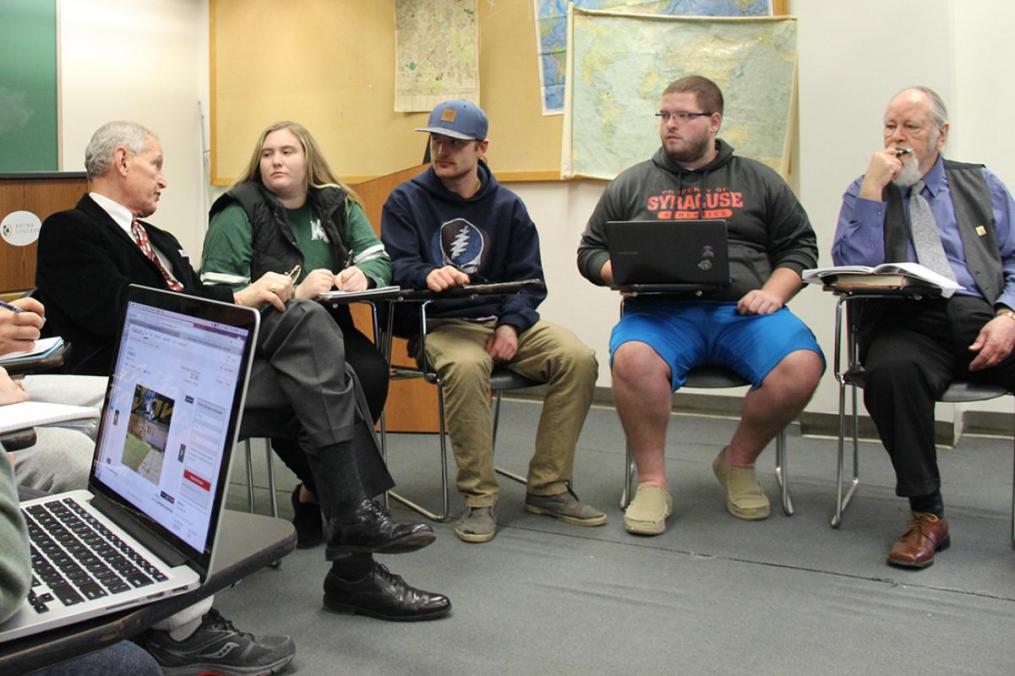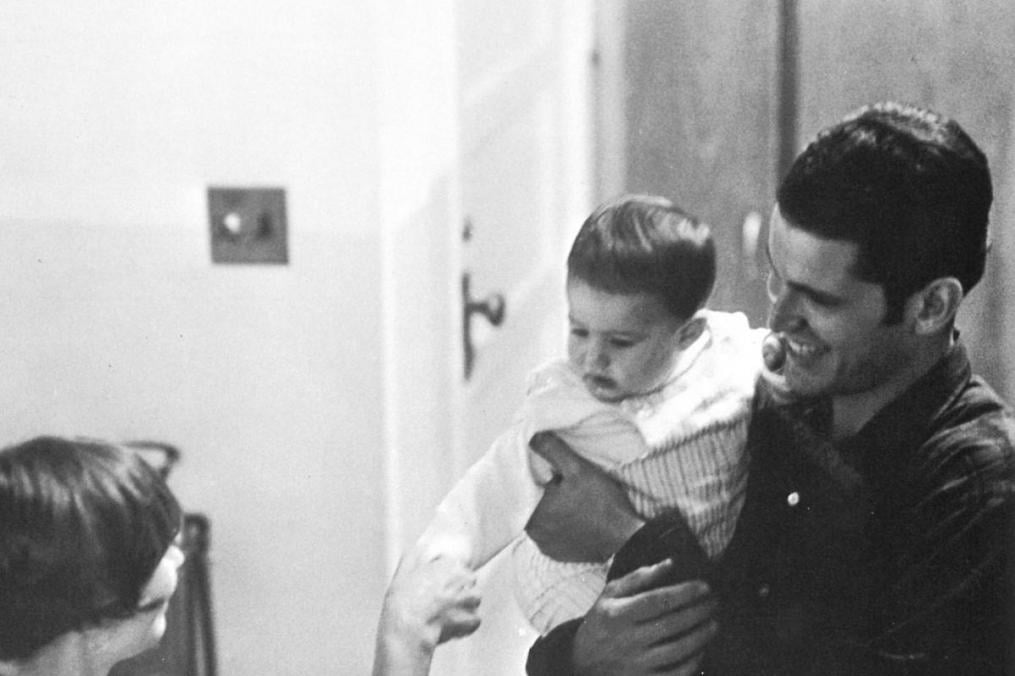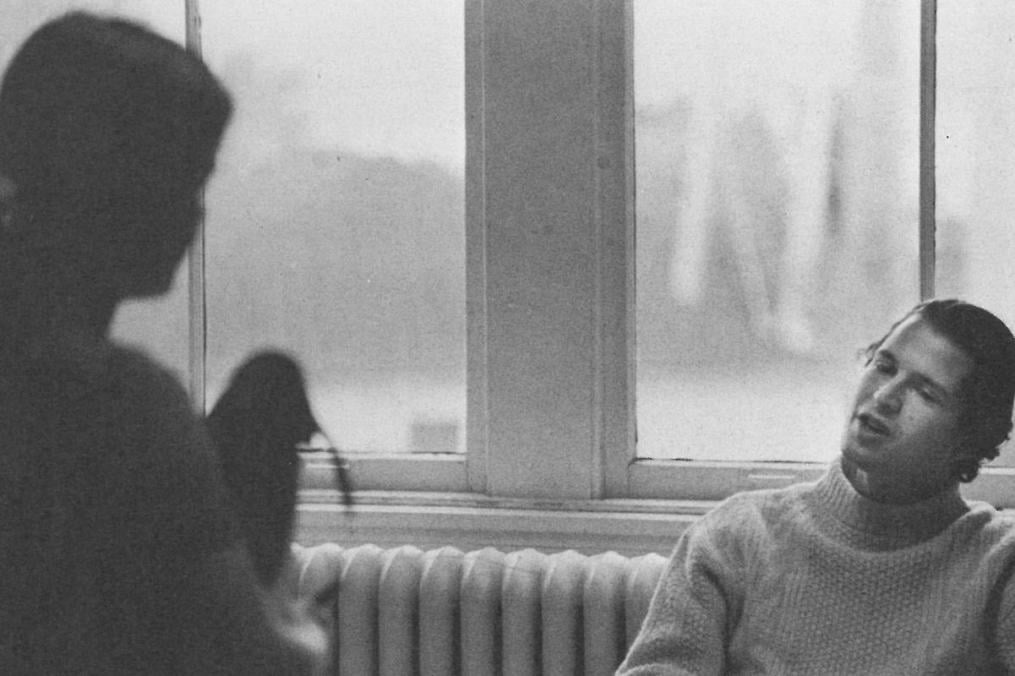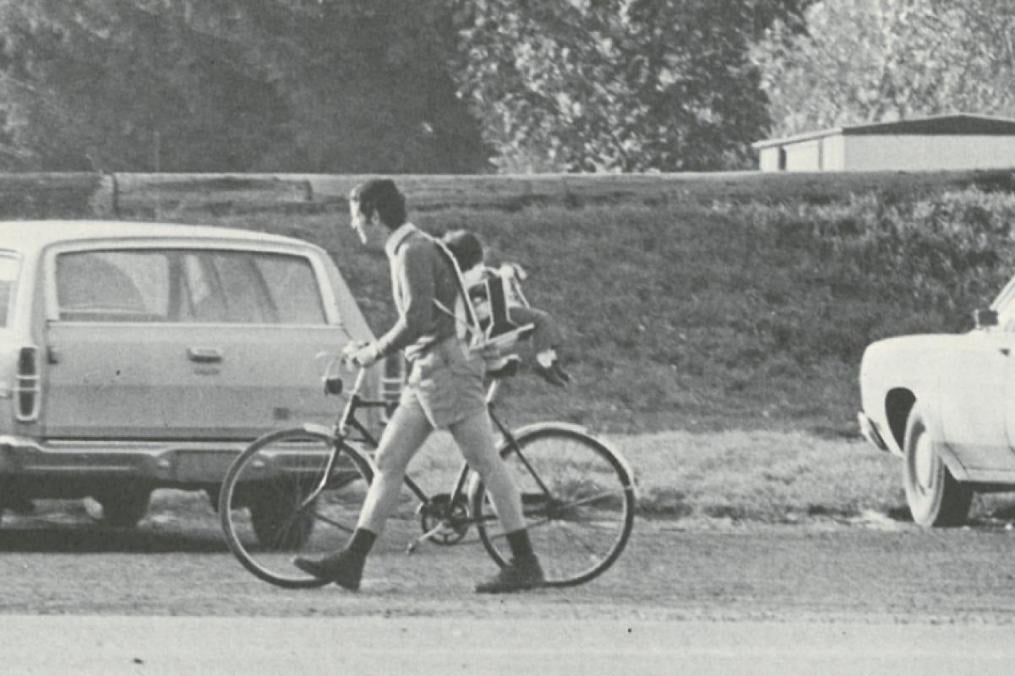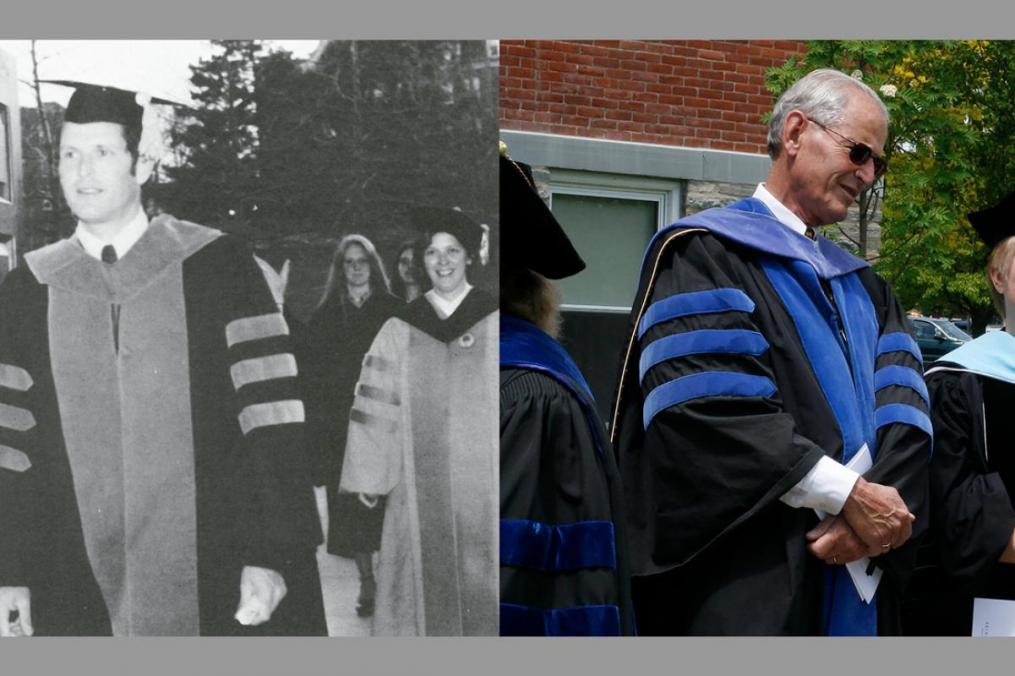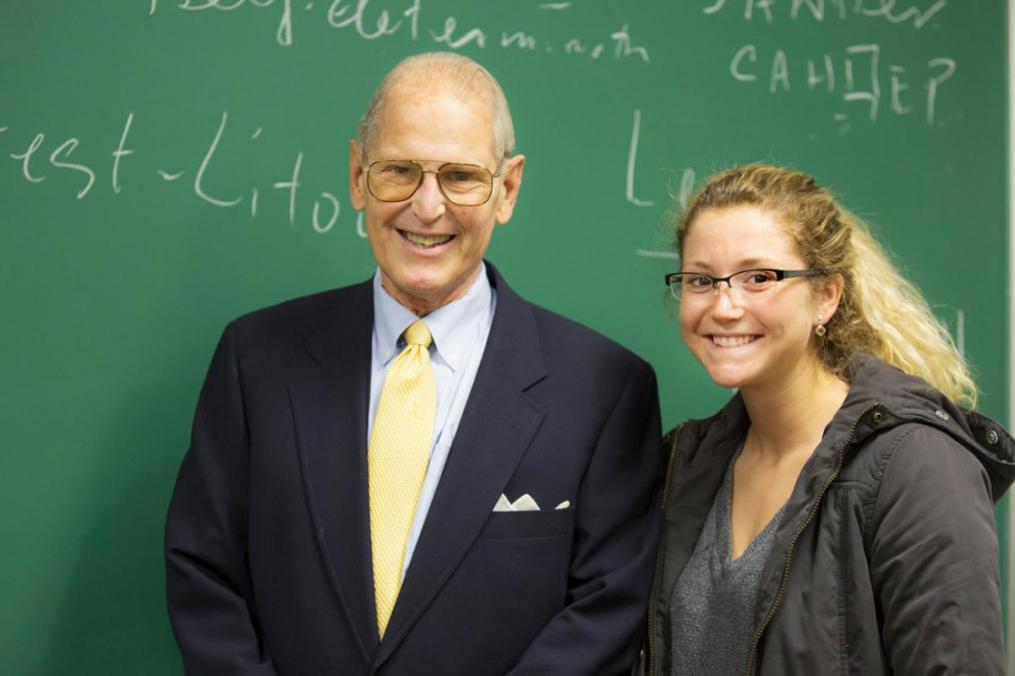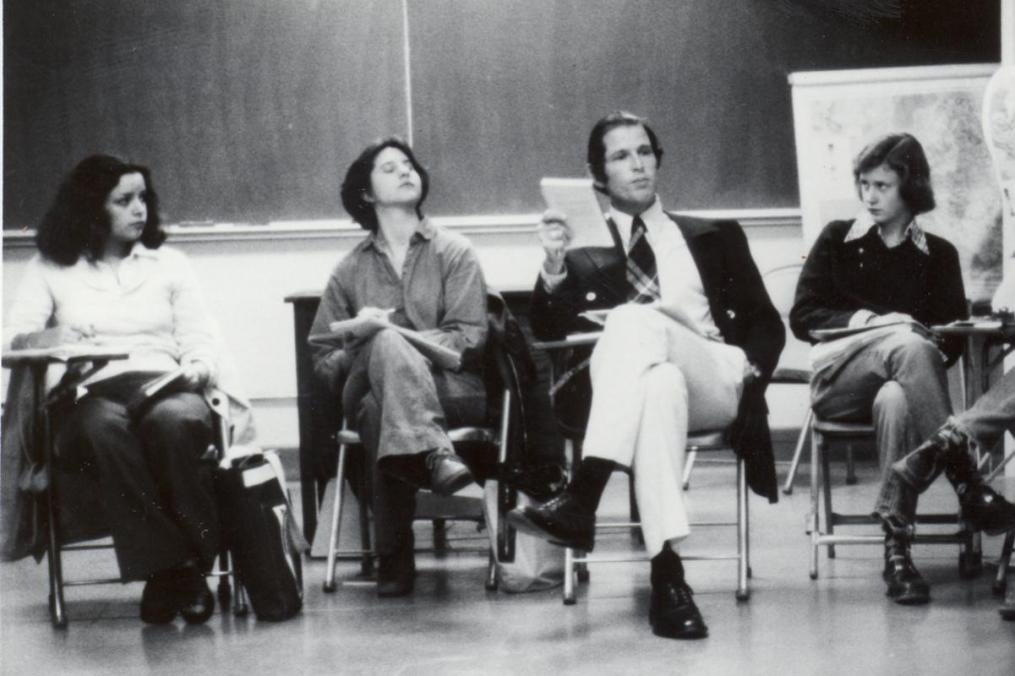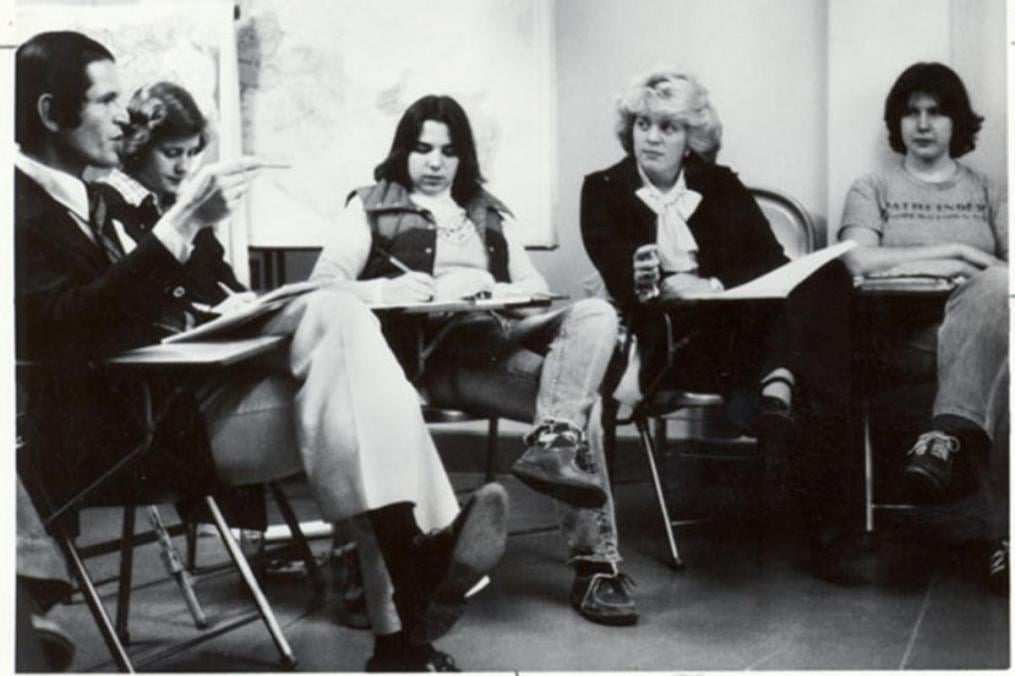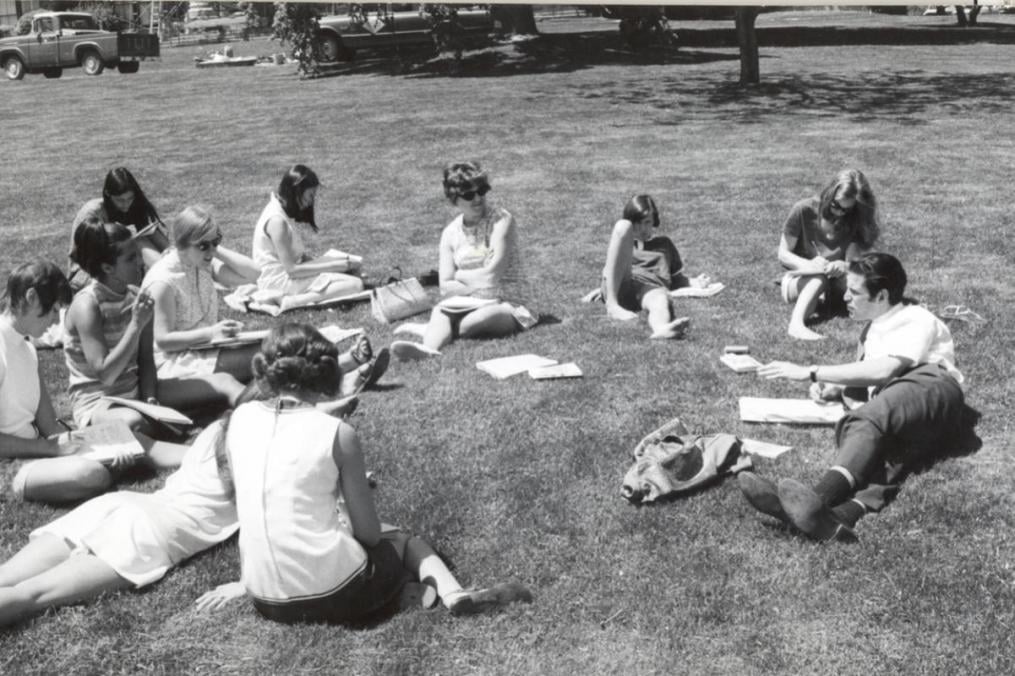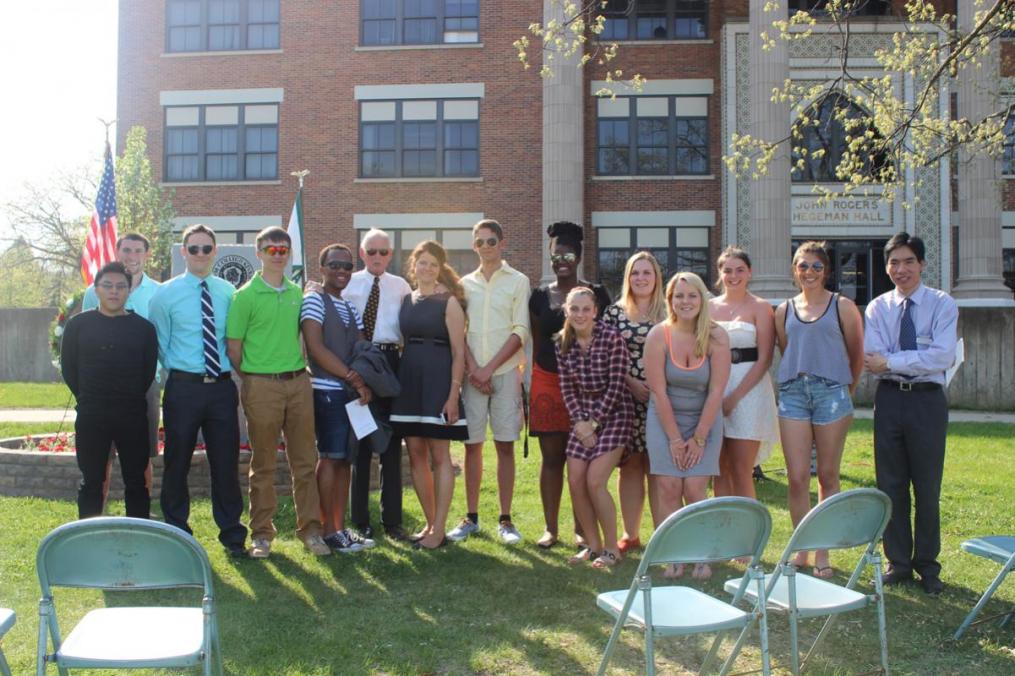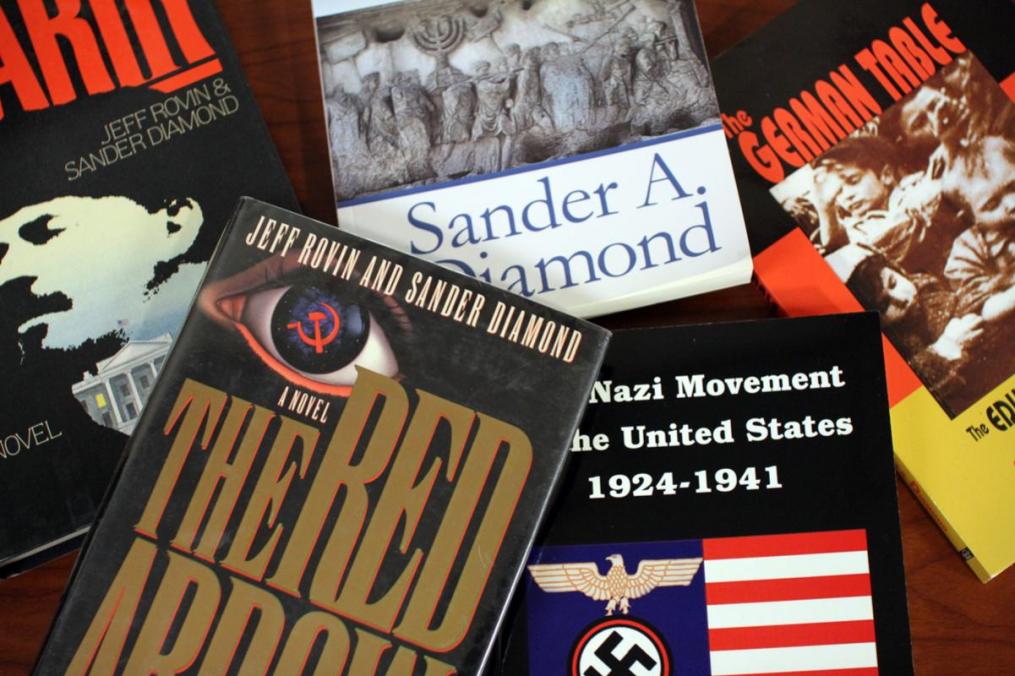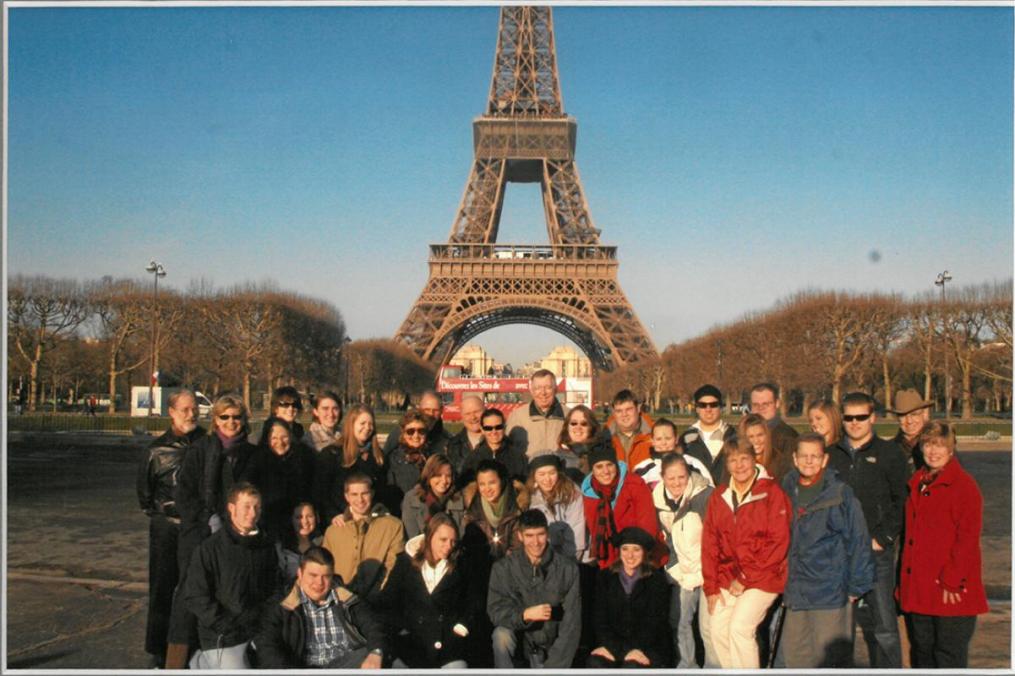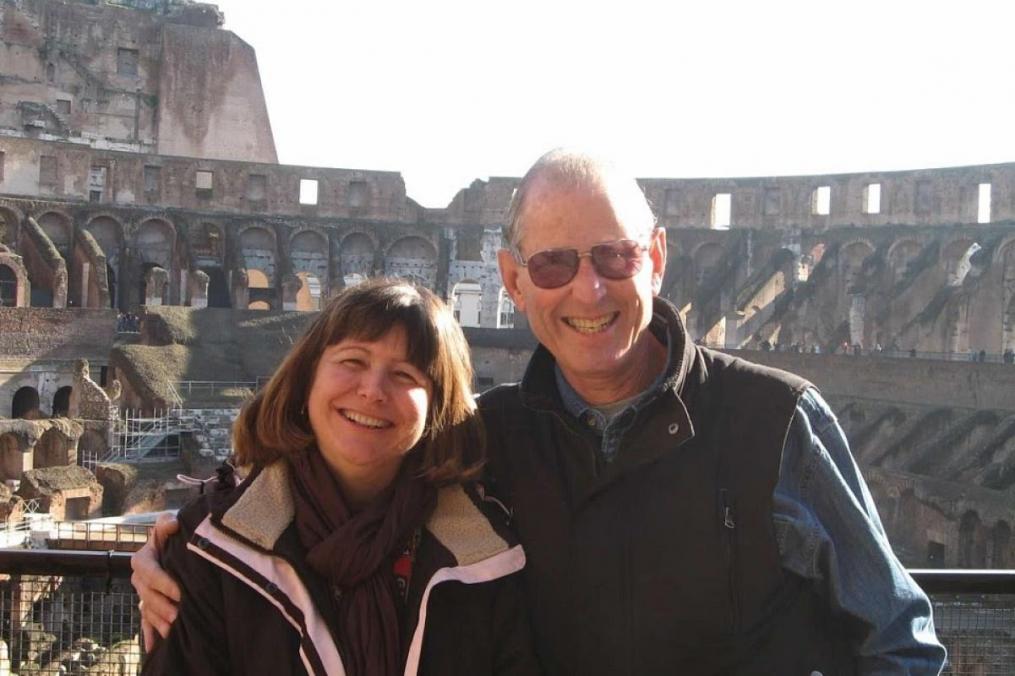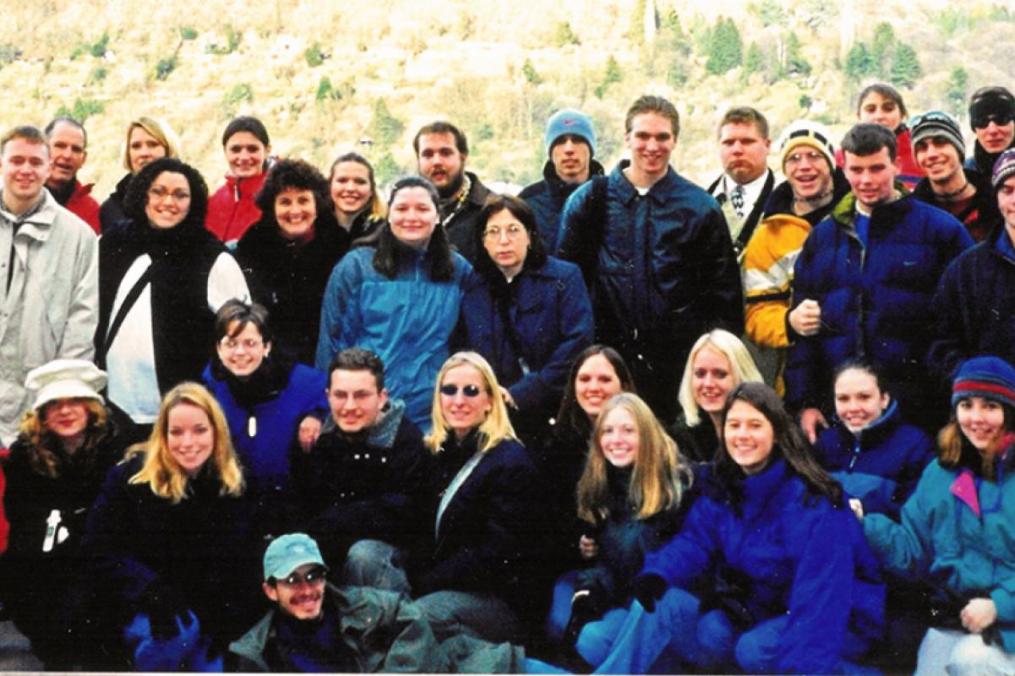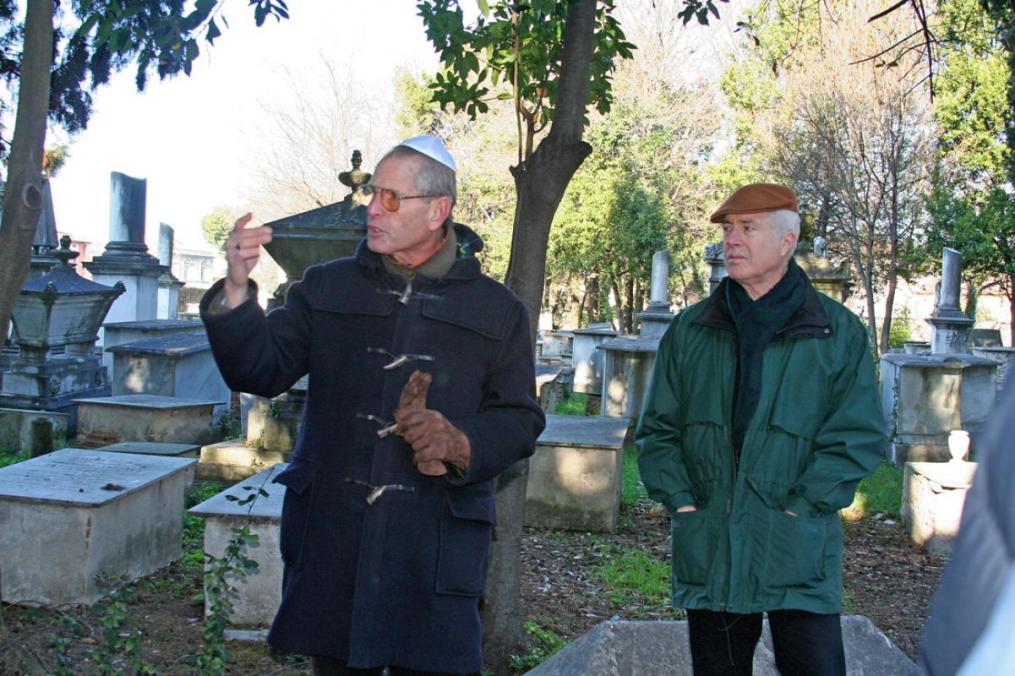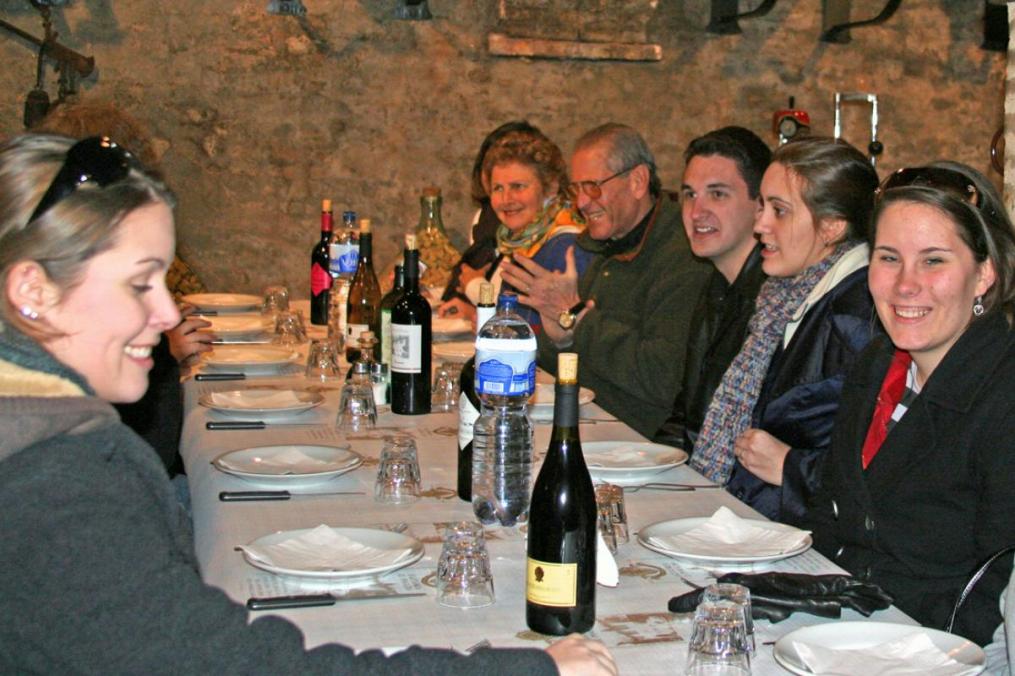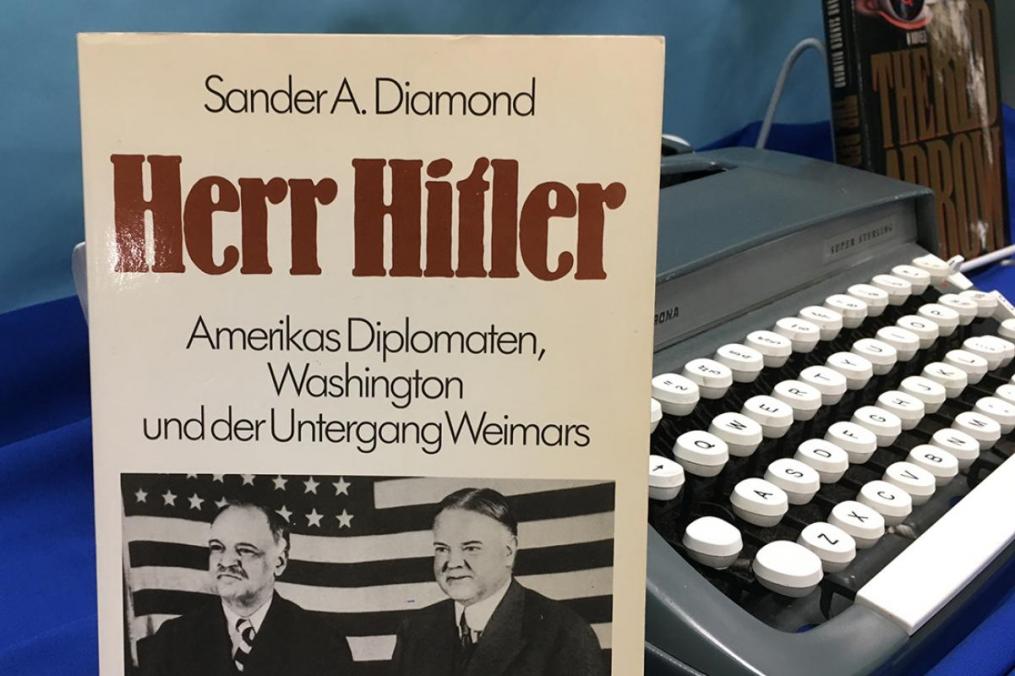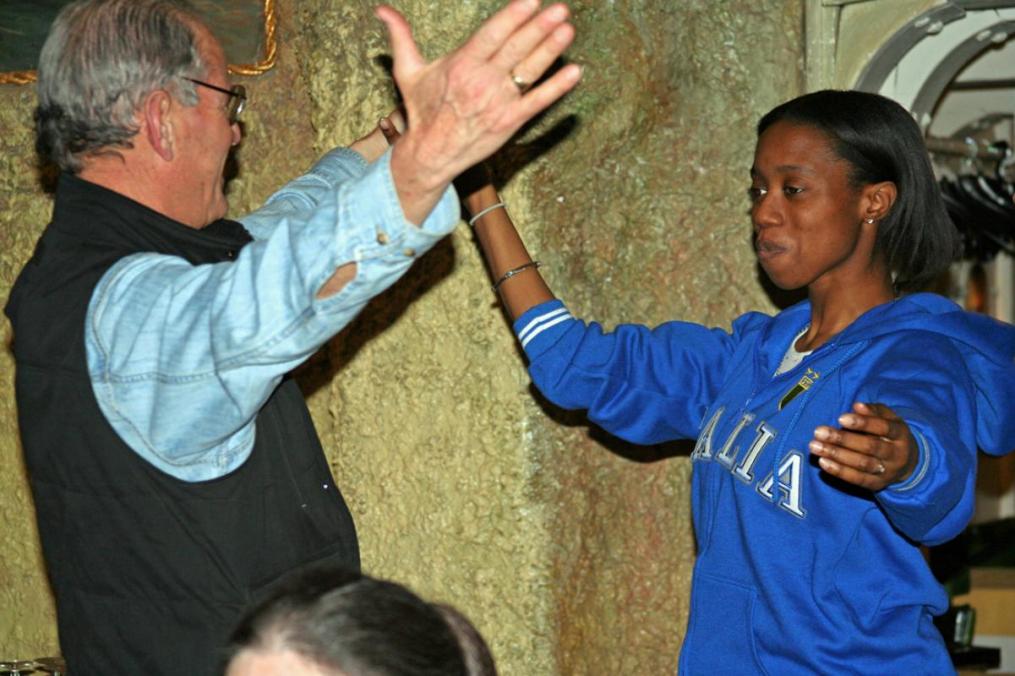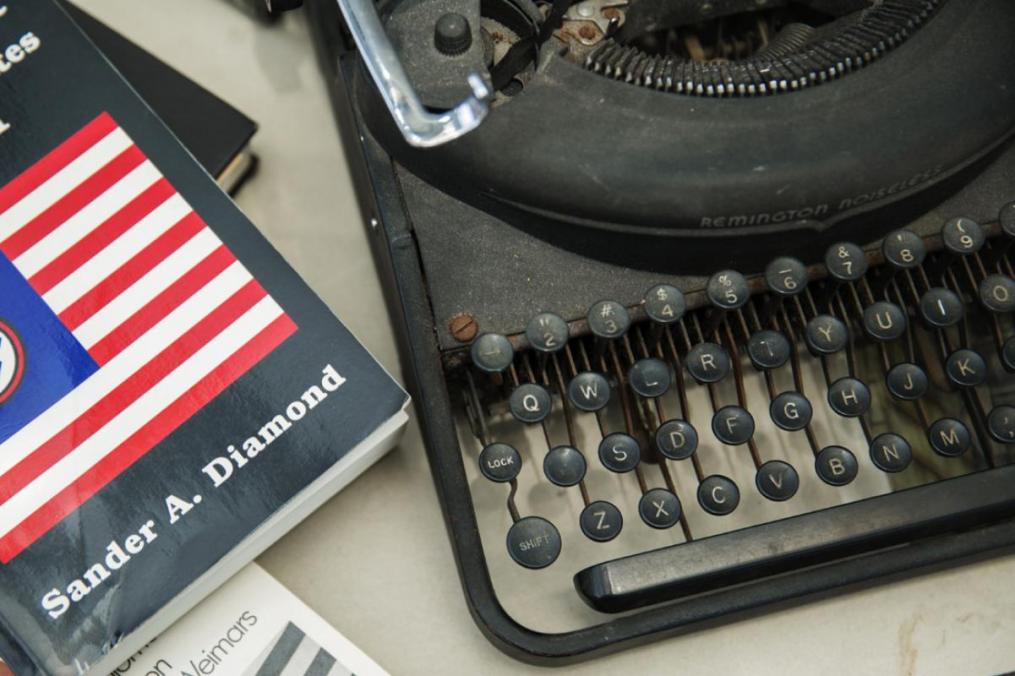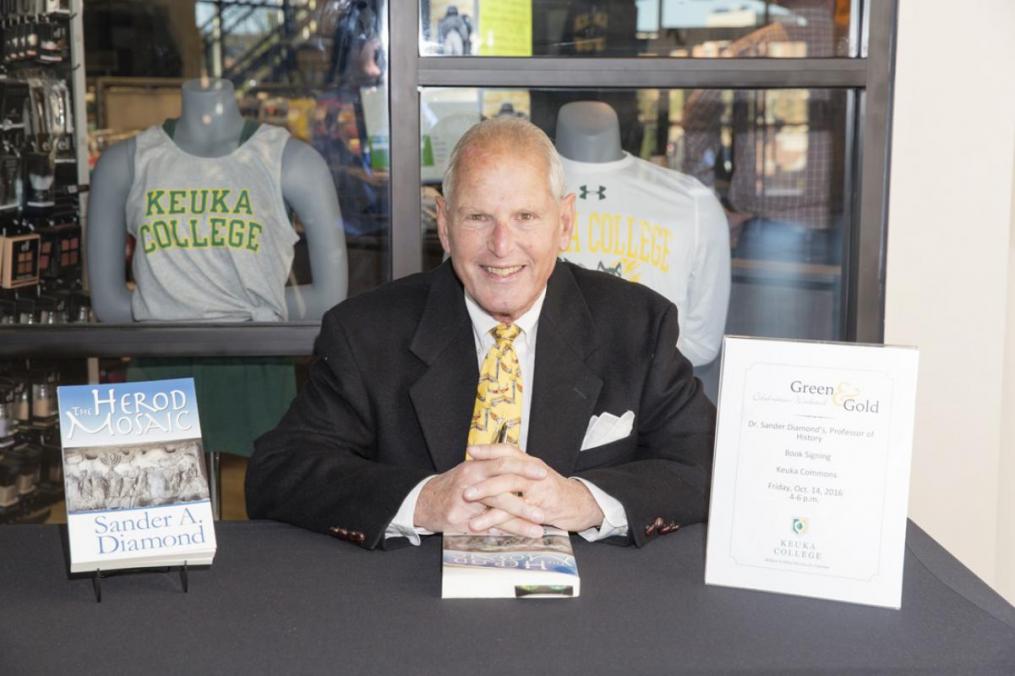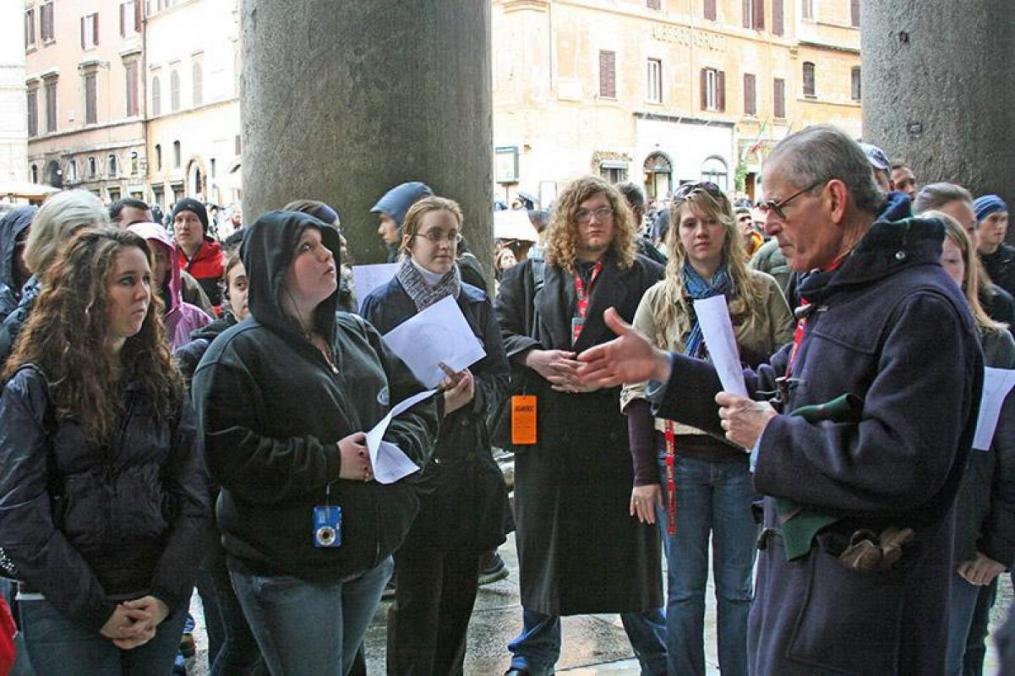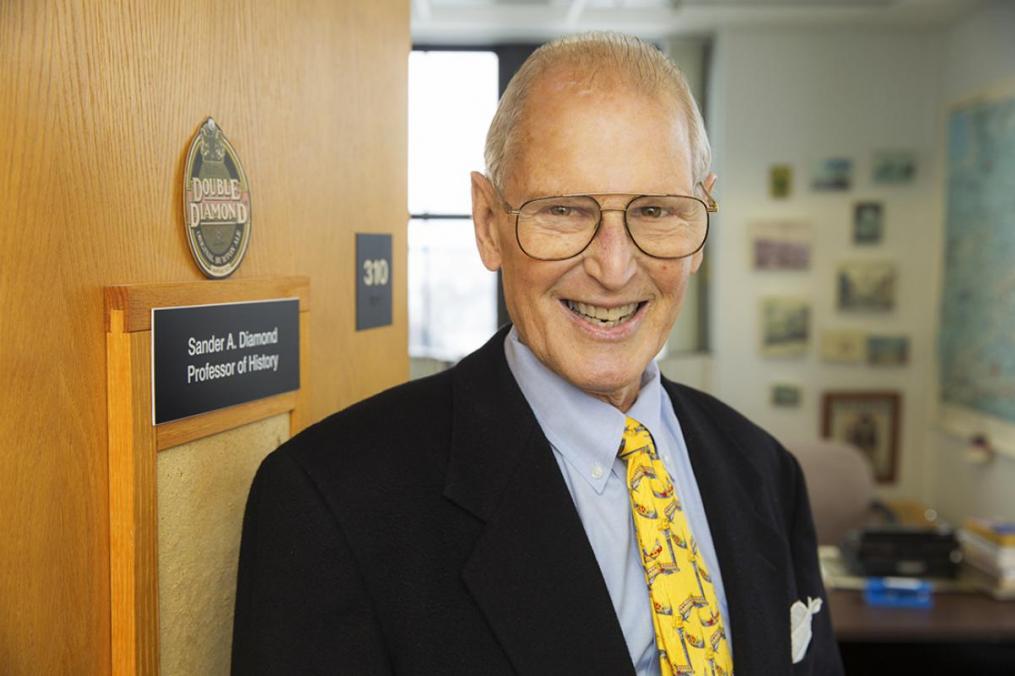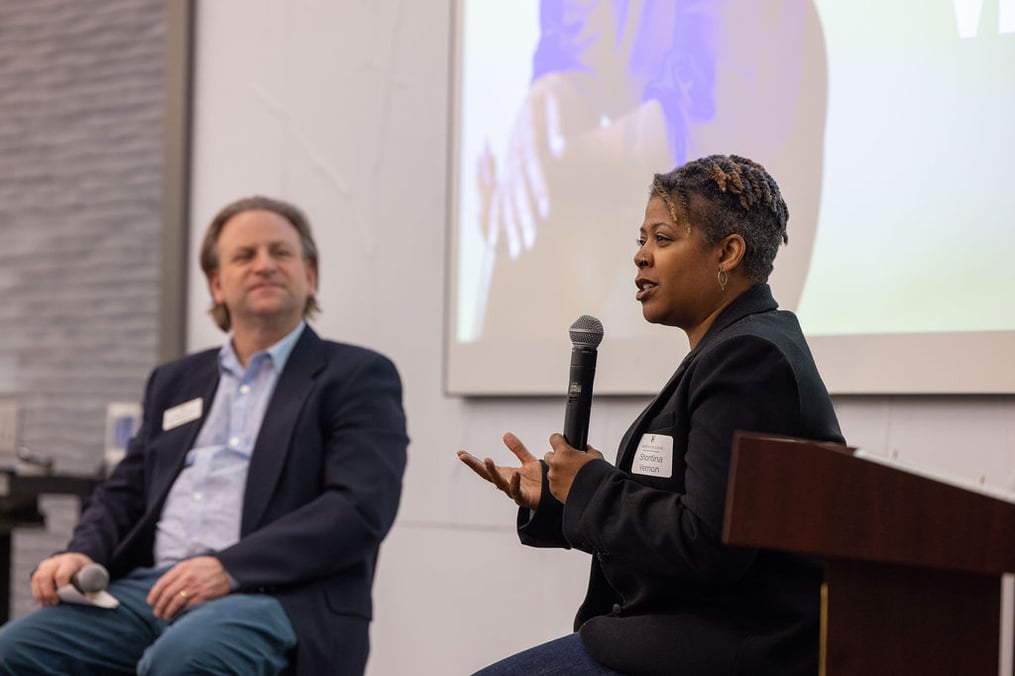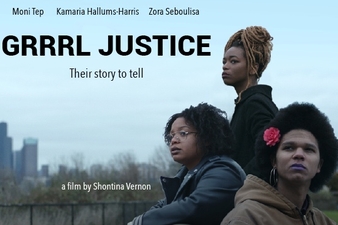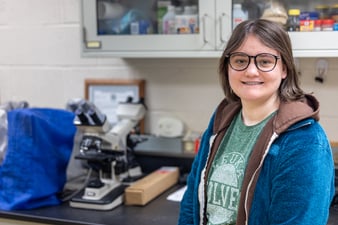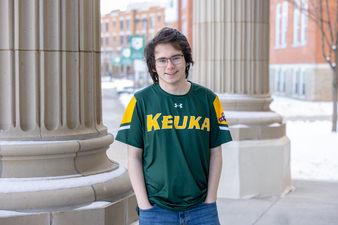Dr. Sander A. Diamond sits before a cluster of students, with several books open on his lap, about to preview the day’s lecture with a brief discussion of current events. Weaving in students’ first names, Dr. Diamond’s commentary becomes conversation, which leads to engagement, and ultimately, instruction. And that’s just the first few minutes.
His passion moves him from podium to board to a seat before his students, and back to his feet several times over 85 minutes before his oratory slows. “Good lecture? I know it was. I put my heart into this. Whoo! Now that was a workout.”
An expert in German history, particularly the years surrounding World War II and the Holocaust, Dr. Diamond’s research on projections of the lost Jewish population from Eastern Europe is featured at the National Holocaust Museum in Washington, D.C. and cited in the archives of the Library of Congress. His 1974 book, The Nazi Movement in the United States, 1924-1941, earned a Pulitzer Prize nomination in history. He’s since penned six others.
But it’s his work with students that means the most to him.
As he prepares to exit the classroom after half a century, his renowned lectures, group Field Period® trips, and prolific writings are the legacy he will leave.
“He is an institution, and he has pushed me to excel … ” says political science and history major Matt McFetridge ’12, who later earned two master’s degrees from elite universities in China and London. “He had such a sharp insight into so many variables that it pushed me to think deeper about broader issues. The classes that he taught were in a league of their own. He is the man, the myth, and the legend.”
Inside the Classroom
To Dr. Diamond, every lecture is a chance, not just to teach the turning points of history, but its very nuances. Thanks to Dr. Diamond, students learn about the roots of Black Friday economics, recognize the passive-aggressive insults inherent in the signing of the Treaty of Versailles, or hear the 19th century Wagner compositions that Hitler chose as narrative for his deluded visions of grandeur.
Instead of textbooks, Dr. Diamond cites the writings of historians whose books he carries—stacked high—to recommend. The master storyteller weaves compelling details and a generous helping of German vocabulary into every lesson, adding news clippings (some in German), illustrations, stamps, and other handheld relics. He recently donated his extensive collection of World War II artifacts to the College’s Lightner Library.
Fiercely proud of his Jewish heritage, Dr. Diamond has earned some good-natured ribbing from colleagues like Dr. Drew Arnold, professor of psychology, who’ve noticed how often he can incorporate Jewish history into a lesson.
“My favorite class is Ancient History, which covers the Greeks, Mesopotamia, Hebrews, and the barbarians. Of course, Drew maintains that I teach 14 weeks on the Hebrews and one week on everything else," Dr. Diamond chuckles. "Be assured, I do deal with much more.”
While Dr. Diamond’s good humor enhances the division, Dr. Arnold says, “what I’ve appreciated more is that the academic scholarship here is enhanced because he focuses on that. He’s constantly thinking about the quality of work that he does."
Dr. Diamond’s commitment to excellence is reflected in his attention to detail: he won't enter a classroom except in a suit and tie, and he won't teach a minute less than the full class session. He won’t be cajoled into canceling class the day before a school break either—it’s his professional obligation to those paying tuition, he says. He insists students give the same respect to his classes.
“He frequently says, ‘Unless you’re dead, you should be in class,’ and I haven’t missed a class yet because of that,” says Maeve Fletcher ’18, an educational studies major. “I have never met a teacher so dedicated to teaching.”
In the spring of his first year on campus, Professor of History Dr. Chris Leahy experienced a legendary Dr. Diamond lecture himself when the senior professor invited Leahy and his entire NY state history class to a presentation on the Nuremberg Trials. "To my delight—though not to my surprise—I found myself really getting into the class," Dr. Leahy describes. "I was witnessing a master at work."
Whether an alum graduated in the ’70s, the ’90s, or just last year hardly matters; many still recount their time with him.
“Sander Diamond makes history come alive whether you’re in say, the Garden of Gethsemane, or a cathedral in Cologne,” says Luanne Graulich ‘90, a Trustee Emerita who joined four of his Field Period® trips, and sat in on some classes beforehand. “He takes you back in time. You don’t just observe, you experience.”
Retired nurse-medic Rudi White, a native of Bavaria who audited Dr. Diamond’s German History class in 2015, says his impact on young students could be seen in the current events discussions: “Initially, some had no clue what was going on in the world, and now they are paying attention.”
Passport to History
Dr. Diamond’s work outside the classroom—including seven books, multiple scholarly articles, and nearly 300 op-eds, all written on his beloved IBM Selectric typewriter—has captured international attention. His writings—which have reached as far as Germany and the Russian Federation—utilize the “Verstehen” approach, which holds that one must live and work in a region’s environment before writing about it.
“As a professor, I’ve tried to visit every place that I lecture about … otherwise, there’s no authenticity. Leading the group Field Period® trips has certainly helped,” he says, referring to the 28 educational excursions he led to a host of sites throughout Western and Central Europe, Russia, Israel, and Jordan.
Dr. Diamond guided his first group overseas, to the former Soviet Union, in 1977 at the urging of his wife, Susan, whose 1979 BSN from Keuka College launched a second career as a University of Rochester–trained nurse practitioner. She suggested since he knew so much about the country, why not plan a trip?
Dr. Diamond estimates he’s lectured nearly one full year aboard tour buses, recreating epic battles in Europe, detailing feats of historic leaders, or prompting spiritual reflection in the Jewish Holy Land for, primarily students but also alumni and local residents—some 2,200 in all, by his last trip in 2010.
“I think Sander provided the inspiration and Susan provided the organization,” Dr. Arnold, himself a 37-year veteran of the College, says of the couple. Married 52 years now, the Diamonds are almost inseparable.
"Dr. Diamond gave us a front-row seat to history," says Mark Spadafore '92, who traveled overseas on two group Field Period® trips, and credits Diamond for getting students and others out of their surroundings and into places where his classroom lessons connected with real life in real time.
Giving a lecture in the very building where the Potsdam Conference was held, experiencing the thrill of Moscow’s Bolshoi Ballet, or hearing a prayer at Jerusalem’s Wailing Wall are irreplaceable moments in Dr. Diamond’s academic career and his life, he says. That career has spanned 40 percent of the College's 128-year history.
Since arriving in Keuka Park 50 years ago, Sander and Susan '79 Diamond raised their two children, Meredith and Matthew, married them off, and now enjoy the thrills of grand-parenting. Throughout it all, Sander kept teaching.
“He’s totally devoted to the students,” his wife says.
Graulich adds: "His contributions are priceless. In your lifetime, you don't have the opportunity to meet someone like him very often."
At Lightner Library, a display exhibit created by current students and recently unveiled honors Dr. Diamond's multi-faceted service.
“It’s been the best gig to be a college professor,” he says. “What could be better than working with students? I wish I had another 50 years.”
—Rachel E. Dewey


